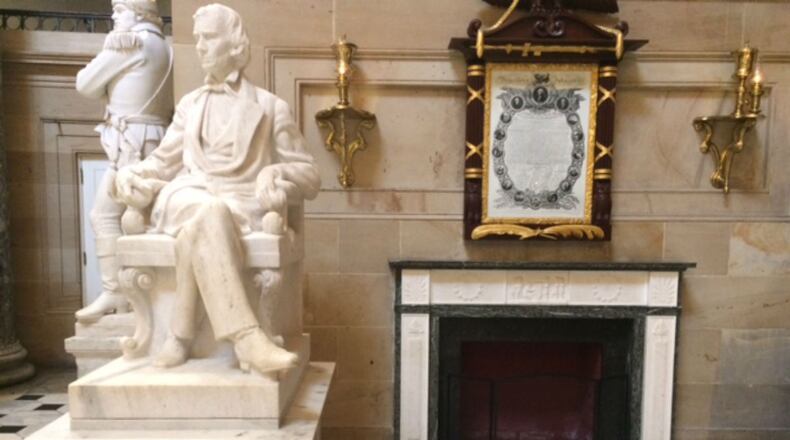The deadly shootings at a black church in Charleston, South Carolina, have sparked national debate about whether Confederate flags, and other symbols of the Confederacy should be displayed in public places.
Civil rights legend U.S. Rep. John Lewis recently suggested the statue of Alexander Hamilton Stephens should be removed from the U.S. Capitol dome. Stephens is best known for serving as the vice president of the Confederate States of America during the Civil War. But there is more to know about this often conflicted Georgia politician.
Stephens was born near Crawfordville, Georgia, in 1812 into poverty and was orphaned at 14. Despite these circumstances, Stephens went on to graduate from Franklin College (later the University of Georgia), and was admitted to the bar just two years later.
Though Stephens was feeble and often in poor health, he fought tirelessly against secession for the seven years he served in the Georgia Legislature, and during his time in the U.S. House of Representatives. Stephen continued to urge the South to remain loyal to the Union up until the time Georgia seceded in 1861. Ironically, Southern leaders chose the former Unionist as vice president of the Confederacy.
Although he was initially a close confidant to Confederate President Jefferson Davis, Stephens frequently and publicly criticized the president's decisions. As the relationship deteriorated, Stephens began to lend his time and energy to Georgia's governor, Joseph E. Brown, and his advocacy for states' rights.
With his fight against secession behind him, Stephens championed for secession in his 1861 "Cornerstone Speech," stating that the foundation of the new government was rooted in "the great truth, that the negro is not equal to the white man."
Though Stephens' influence as vice president was greatly diminished at this point, he attempted, albeit unsuccessfully, to negotiate an end to the Civil War. When the war finally ended in 1865, Stephens was indicted for treason. Shortly after his release from a five-month prison sentence, Stephens was re-elected to U.S. Congress, but Republicans refused to seat him.
During this rare break from political service, Stephens returned to Georgia and authored "A Constitutional View of the Late War between the States," in which he defended the right of states to secede.
In 1873, Stephens was again elected to the U.S. House of Representatives and served until he was elected as the 50th governor of Georgia in 1882. Stephens never married and had no children, but didn't die alone. Many of his emancipated slaves remained with him for little or no money until his death in 1883, just four months into his governorship.
Stephens was buried at Oakland Cemetery, but was re-interred at the front lawn of Liberty Hall, his estate. Liberty Hall is part of A.H. Stpehens State Park, just west of Augusta, Georgia.
In 1905, the Georgia General Assembly created Stephens County in honor of the late governor.
About the Author
Keep Reading
The Latest
Featured


